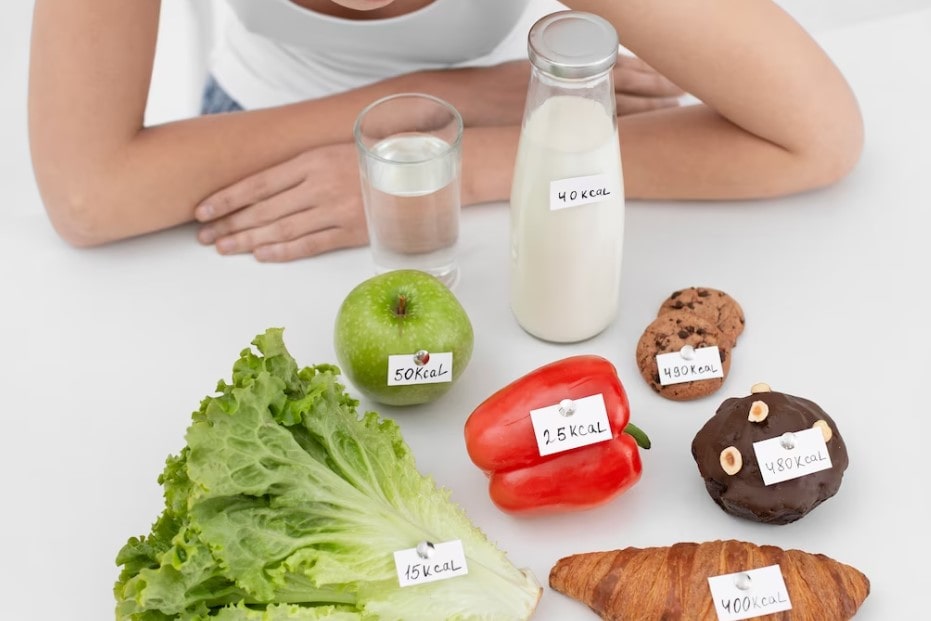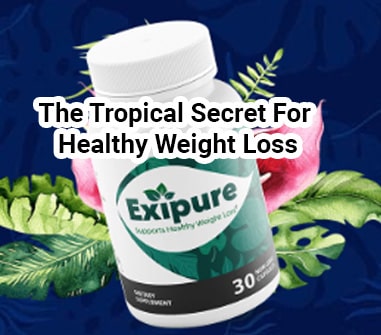In this article, we will be exploring the concept of a dairy-free diet. A dairy-free diet involves excluding all forms of dairy products from your daily food intake, including milk, cheese, butter, and yogurt. This dietary choice has gained popularity in recent years due to various health and ethical reasons. Some people may choose to follow a dairy-free diet for health reasons, such as lactose intolerance, while others may do so for ethical reasons, such as concern for animal welfare.
Then we will cover the basics of a dairy-free diet, including the benefits of this dietary choice, what types of non-dairy milk alternatives are available, how to get enough calcium and protein in a dairy-free diet, and much more. Whether you are new to the dairy-free lifestyle or have been following it for a while, this article will provide you with all the information you need to succeed in following a dairy-free diet.
I. The Science Behind Dairy-Free Diets
A dairy-free diet is a way of eating that eliminates or reduces the consumption of dairy products. There are various reasons why individuals may choose to adopt a dairy-free diet, including lactose intolerance, a desire to reduce animal products in their diet, or a desire to improve their health. Regardless of the reason, it is important to understand the role that dairy plays in the body and the benefits of reducing or eliminating dairy intake.
Dairy products, such as milk, cheese, and yogurt, are a rich source of calcium and other essential nutrients. However, they can also be a source of unwanted fat, hormones, and cholesterol. For individuals who are lactose intolerant, consuming dairy products can cause digestive issues like bloating, gas, and diarrhea.
There are several benefits to reducing or eliminating dairy intake. One benefit is improved digestion. For individuals with lactose intolerance, removing dairy from their diet can relieve digestive symptoms and improve gut health. Additionally, reducing dairy intake can also help individuals achieve a healthier weight and reduce the risk of heart disease and certain types of cancer.
There are different types of dairy-free diets, including lacto-vegetarian, vegan, and paleo. Lacto-vegetarian diets eliminate meat, but allow for the consumption of dairy products. Vegan diets eliminate all animal products, including dairy. The paleo diet eliminates dairy, but allows for the consumption of meat and other animal products. When adopting a dairy-free diet, it is important to find a type of diet that works for your individual needs and preferences.
II. Best Dairy-Free Foods
In the dairy-free diet, it’s important to find alternatives to dairy products that can provide the necessary nutrients and nourishment. The following are some of the best dairy-free foods that can be included in a balanced diet:
Non-Dairy Milk Alternatives: With the increasing demand for dairy-free products, there are many non-dairy milk options available in the market, including almond milk, oat milk, coconut milk, soy milk, and rice milk. These alternatives are not only a good source of calcium but also contain vitamins and minerals that are important for overall health.
Dairy-Free Protein Sources: There are several plant-based protein sources that can be consumed as part of a dairy-free diet. Some of the best options include tofu, tempeh, legumes, nuts, and seeds. These foods are high in protein and other essential nutrients, making them great options for those following a dairy-free diet.
Calcium-Rich Non-Dairy Foods: Calcium is an important mineral that is required for strong bones and teeth. Some of the best calcium-rich non-dairy foods include dark leafy greens, almonds, tofu, and fortified non-dairy milk alternatives.
Healthy Fats: Healthy fats are important for overall health and can be obtained from sources such as avocados, nuts, and seeds. These foods not only provide healthy fats but also contain other essential nutrients that are important for overall health.
III. Sample Dairy-Free Meal Plan
A dairy-free diet doesn’t have to be limiting or boring. With a little creativity and planning, it’s easy to create delicious, nutritious meals that provide a wide range of essential nutrients. Here is a sample meal plan to get you started on a dairy-free diet.
Breakfast: Start your day with a nutritious breakfast that provides energy and sustains you until lunchtime. Try a smoothie bowl made with almond milk, frozen berries, and avocado. Top it off with a drizzle of honey and some dairy-free granola for extra crunch. Another option is a hearty bowl of oatmeal cooked with coconut milk and topped with fresh fruit and a drizzle of pure maple syrup.
Lunch: For lunch, try a hearty salad filled with greens, beans, and a variety of colorful vegetables. Top your salad with some quinoa or lentils for protein and a sprinkle of nuts for healthy fats. For something warm, try a bowl of vegetable soup or a vegan chili made with plant-based protein, such as tofu or tempeh.
Dinner: For dinner, enjoy a comforting, hearty meal that satisfies your cravings without the dairy. Try a vegan lasagna made with tofu ricotta or a vegan stir-fry made with your favorite vegetables and a protein source like tofu or tempeh. You could also try making a dairy-free pizza with a cauliflower crust and topped with dairy-free cheese and your favorite toppings.
Snacks: Snacking is an important part of any diet, and a dairy-free diet is no exception. Stock up on healthy snacks like fresh fruit, raw veggies, and dairy-free dips. Try making your own trail mix with dairy-free chocolate chips, dried fruit, and nuts. For a sweet treat, try making your own dairy-free frozen yogurt or sorbet.
With this sample meal plan, you can see how easy it is to create delicious, nutritious meals on a dairy-free diet. Remember to include a variety of foods and to focus on whole, unprocessed ingredients. With some creativity and planning, you can easily enjoy a delicious, healthy dairy-free diet.
IV. Common Mistakes and How to Avoid Them
In a dairy-free diet, it is important to be mindful of certain nutrients that are commonly found in dairy products, such as calcium. To ensure that you are getting enough calcium, it is recommended to include calcium-rich non-dairy foods in your diet, such as leafy greens, almonds, and fortified non-dairy milk.
Another common mistake in a dairy-free diet is relying too heavily on processed non-dairy products. While these products can be convenient, they may not provide all the nutrients that your body needs. To ensure that your diet is balanced and nutritious, it is important to incorporate a variety of whole foods, such as fruits, vegetables, whole grains, and dairy-free protein sources.
Lastly, it is important to pay attention to your protein intake in a dairy-free diet. While there are many plant-based protein sources, it can be easy to fall short on this nutrient if you are not intentional about including it in your meals. Some good dairy-free protein sources include legumes, tofu, and seitan.
V. How to Adopt a Dairy-Free Diet
Adopting a dairy-free diet can be a big change, but it can also have significant health benefits. The first step in transitioning to a dairy-free diet is to gradually reduce your intake of dairy products. This will help your body adjust to the change and reduce the risk of digestive issues. You can start by replacing dairy milk with non-dairy alternatives, such as almond milk or oat milk, in your coffee or smoothies. Another way to reduce dairy is to try dairy-free substitutes for cheese and yogurt.
Finding healthy dairy-free recipes is another important aspect of adopting a dairy-free diet. There are many great resources available, including cookbooks, websites, and social media platforms. Many of these resources feature simple, delicious, and nutritious dairy-free recipes that can help you maintain a well-balanced diet.
Meal planning and preparation is also essential for a successful transition to a dairy-free diet. Having a plan in place for what you will eat each day will help you stay on track and avoid impulse purchases or unhealthy choices. Meal prepping is a great way to ensure that you have healthy and delicious food on hand when you need it. You can prepare and store non-dairy milk, dairy-free cheese, and dairy-free yogurt in advance, and have them ready to go when you need a quick and healthy snack. Additionally, preparing a grocery list before you go shopping will help you stay focused and avoid buying items that are not part of your dairy-free diet.
In conclusion, adopting a dairy-free diet can be a beneficial and achievable goal. With a gradual reduction in dairy intake, finding healthy dairy-free recipes, and meal planning and preparation, you can successfully transition to a dairy-free diet that is good for your health and the environment.
Conclusion
In conclusion, switching to a dairy-free diet can offer numerous health benefits, such as reducing the risk of certain diseases and improving gut health. It is essential to educate yourself on the science behind dairy-free diets, and the best dairy-free foods to incorporate into your diet, such as non-dairy milk alternatives, dairy-free protein sources, and calcium-rich non-dairy foods. A gradual reduction of dairy intake, combined with meal planning and preparation, can help make the transition to a dairy-free diet smoother. Additionally, it’s important to be mindful of common mistakes, such as not getting enough calcium and relying too heavily on processed non-dairy products. By following these tips, you can adopt a healthy and sustainable dairy-free lifestyle that aligns with your personal health goals. Remember, the key to success with any diet is finding a balance that works for you, and incorporating a variety of healthy foods. We encourage you to give a dairy-free diet a try and experience the benefits for yourself.



